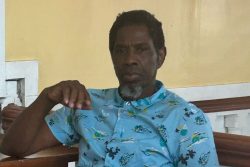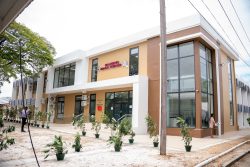By Valrie Grant, Managing Director, GeoTechVision
Over 160 years ago, in 1854, an English physician, John Snow, provided the classic example of how mapping can be used in epidemiological research. By mapping the locations of those afflicted with cholera, he was able to identify the water source responsible for the outbreak.
This was one of the earliest recorded uses of GIS in epidemiological studies and today GIS has continued to be used in public health. By tracking the sources of diseases and the movements of contagions, health departments are responding more effectively to outbreaks of disease by identifying at-risk populations to provide targeted intervention. In addition, by recording the reported cases of an infection and monitoring travel patterns, predictions can be made as to the next most likely place of a disease outbreak.

In the Caribbean, several health ministries have looked to GIS for creating health atlases – mapping all health and health-related facilities in a country. Other vital information secured include disease mapping and surveillance and vector control. Some health agencies have moved from the traditional paper-based data capture to electronic computerized forms on handheld mobile devices. This change to electronic records holds much promise for the future of GIS in healthcare as both patient records and other health data can be geocoded and analyzed in a GIS to better understand a patient’s demography, and the nature of health problems prevalent in certain locations.
Even beyond this, the new insights obtained through these kinds of analyses can help stakeholders in healthcare better plan for the location of new health facilities.
The recent spread of Chikungunya (ChikV) across the Caribbean provided a real case of health GIS in action in some Caribbean countries. ChikV was first reported in Saint Martin in December 2013. Approximately six months later it had spread throughout the Caribbean. ChikV had a real debilitating effect on its victims. The name Chikungunya derives from a word in Makonde, the language spoken by the Makonde ethnic group living in southeast Tanzania and northern Mozambique. It roughly means “that which bends.” Its painful effects has been experienced by many across the region.
Health departments identified certain challenges with traditional methods of controlling the problem namely:
- Fogging: Using truck-mounted equipment does not reach indoor resting places of adult Aedes aegypti mosquito – the vector that carries ChikV;
- Control issues around disease cases;
- Delays between infection and case reporting due to batch testing;
- Vector control impacts a very small fraction of infected mosquitoes;
- Poor connectivity (real time information communication) between the clinics in some islands
Many health ministries in the region incorporated GIS in their enhanced entomological surveillance to assist them in a more targeted approach to combating the spread. The result; with GIS they were able to answer questions such as:
- Where did the outbreak take place?
- What was the pattern in which the diseases spread across the country?
- What segment of the population was most affected and where were they located?
- What were the environmental determinants?
- What were the number of cases at the various clinics and were there casualties at these clinics?
Of course these answers could be obtained using other non-GIS methods, but it would be more time consuming when compared to using a GIS which gave a multi-dimensional and layered view that quickly showed the relationships between the many factors at play.
Getting the answers to these questions earlier had a positive impact on intervention efforts including but not limited to:
► A more targeted approach
► Efficiency in resource allocation
► Creation of database to study other outbreaks
Cost savings
Creation of synergies among departments – data sharing and having the same “view”
The geodatabase provides a platform of historical data for assisting in planning of future control strategies.
Maps are very critical to the planning of any activities or interventions in which geographical coverage is a critical component. No other information system utilises and combines maps with relevant multi-dimensional data more effectively than a GIS.
GIS now plays a crucial role in the global management and tracking of outbreaks of diseases and contagions. GIS has been indispensable in the fight against SARS and more recently Ebola. Naturally, few industries are better served by the capabilities of GIS than healthcare. Notwithstanding this, GIS is still much underutilized in the health sector in the Caribbean region. Better information management, greater availability and access to data, the right technological tools and greater know how are needed to help health professionals throughout the region and Guyana specifically, understand and use geospatial technologies in enhancing healthcare.
It should be clear by now that GIS in healthcare goes far beyond disease mapping, tracking and response. According to Esri®, which has more than 5,000 health care clients worldwide, GIS plays a critical role in determining where and when to intervene, improving the quality of care, increasing accessibility of service, finding more cost-effective delivery modes and preserving patient confidentiality while satisfying the needs of the research community for data accessibility.
GIS is helping many health organizations save lives by making better informed decisions every day. It’s time to get onboard fully!








